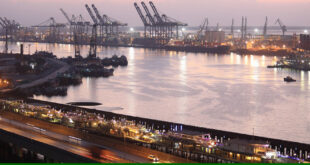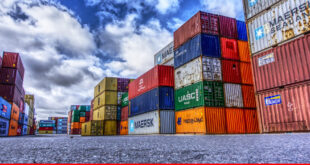Pakistan is anxious to continue trade with its neighbours especially with India, despite border tensions. The government is committed to increase regional trade with India as part of encouraging peace without compromising on national sovereignty. It would like to trade in energy for import of electricity from India to overcome the energy crisis. The Pakistan government is planning to develop trading land ports at Pakistan’s three neighbouring junction points Wagha, Torkham and Chaman as gateways to regional trade.
Pakistan should trade with India for better standard of living of its own people. No country in the world can improve its economic and social relations without going into business. For exports from India, there is tremendous scope in chemicals, textiles, machinery, mechanical appliances and electrical equipment. As for imports from Pakistan, trade possibilities exist in textiles, jewellery and precious metals, and base metals.
The services sector, which has become increasingly important in both Pakistan and India economies, provides a favorable ground for trade, particularly in sectors such as information technology and business process outsourcing, healthcare and entertainment sectors.
Trade normalization between the two countries would benefit producers and consumers. Producers will have access to a much wider market and will allow them to achieve greater efficiency in production. The consumers in both countries would also benefit from lower product prices and better quality and more variety.
The most significant impact of the trade normalization process would be on informal trade flows estimates of the extent of such trade range between US$250 million and US$5 billion. The primary reason for informal trade is the high transaction costs of trading, as a result of which traders often resort to trading through third-country ports, mainly Dubai.
At present, goods travel from Delhi to Lahore through Mumbai, Dubai and Karachi, making the journey several times longer and four times more costly. The move towards trade normalization would certainly lead to a reduction in transaction costs and consequently shift informal trade flows to formal channels.
India and Pakistan need to prepare themselves to facilitate the expansion of bilateral trade. Currently there is only one land route through Attari and Wagah in Punjab for rail and road transport of goods. More land routes need to be opened, such as the Munabhao-Khokhrapar and Hussainiwala-Ferozepur routes.
Media impact
In both India and Pakistan, the media has a powerful influence on public sentiments. Negative reporting has so far dominated the India-Pakistan relationship. It would be much more helpful for reporters to create a positive environment that is conducive to holding talks on trade normalisation between the two countries. The media should try to be optimistic about the benefits of trade normalization and the possible impact that this could have on strengthening bilateral ties and regional integration. Trade can serve as a powerful tool for conflict resolution between India and Pakistan. It is time that the two countries realize the benefits of economic partnership.
Diplomatic steps
India and Pakistan should take on joint responsibility for peaceful, prosperous and cooperative development in South Asia. Government of Pakistan announced its intention to grant Most Favored Nation (MFN) status to India, replicating a decision made earlier in New Delhi and potentially laying the groundwork for greatly expanded trade between the two South Asian neighbors.
Pakistan MFN decision suggests that it is prepared to accelerate trade ties. Increased trade and the socioeconomic benefits can build constituencies in both countries for more cooperative bilateral relations.
Enhanced trade with India would allow Pakistan to become an ‘economic hub’ in Asia. It will enable Pakistan to benefit from China’s trade surplus and ample savings; from resource-rich Central Asia and Iran; and from rising India.
Pakistan has served as this hub before. Several important trade routes ran through present-day Pakistan — extending from Iran, Afghanistan, and Central Asia in the west to India in the east. These routes were later severed by British-era borders and poor relations with India. For Pakistan to once again become a hub for these east-west trade routes, it must not only liberalize trade with India, but also strengthen infrastructure. Indians and Pakistanis should better publicize the positives. The fact that more trade would eliminate, the deadweight losses, resulting from diverting commerce to third countries.
Risk for trade regime
Ishrat Husain of the Institute for Business Administration in Karachi highlight some of the factors that risk derailing the Pakistan-India trade regime. A terrorist attack on India traced back to Pakistan could prompt New Delhi to retaliate by clamping down on trade.
Opposition political parties in both countries could take virulently anti-trade positions that pressure Islamabad and New Delhi into supporting less trade-friendly policies. Powerful industries in both nations that feel threatened by greater trade could prevail on their governments to impose retaliatory measures on trade. The powerful Pakistani and Indian media could take up the cause of smaller industries that suffer from trade liberalization. Ishrat Husain says it is essential that the trade relationship be carefully and proactively managed by both sides.
Pakistani businessman Amin Hashwani argue that the present moment offered an historic window of opportunity for the two nations to move beyond the enmity of the past. He insisted that the Pakistani security establishment does not oppose increased trade with India.
Indian Council for Research on International Economic Relations have convinced that bilateral trade between India and Pakistan could easily reach $25 billion, nearly 10 times its current level.
 PAGE Blog Business Weekly Magazine
PAGE Blog Business Weekly Magazine

